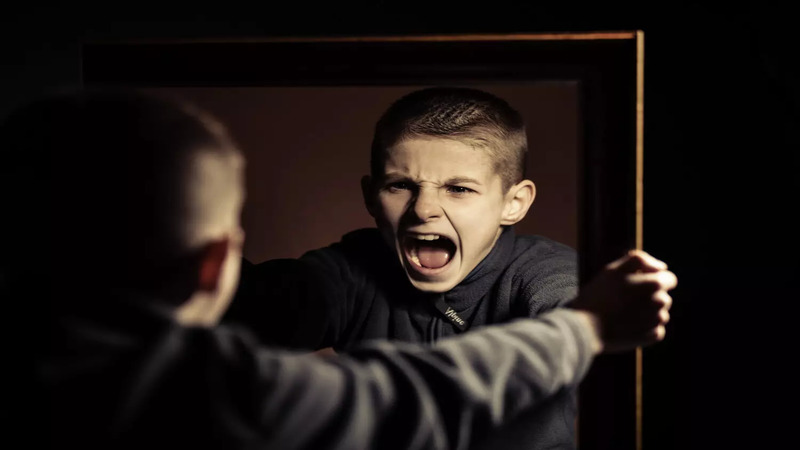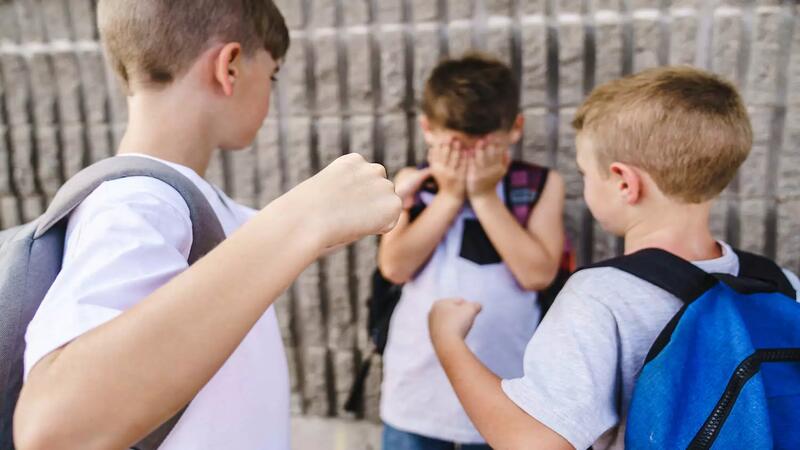
Does your child display aggressive actions too often? Do they pick up fights with siblings and peers all of a sudden? Are you freaking out seeing such instances regularly? Hold on. Being a parent you are not alone. Anger outbursts in children are not unheard of. However, childhood aggression poses significant challenges and there is a need to take action for curbing aggression in children.
While it’s common for children to engage in rough play at times, discerning when such behaviors cross limits is crucial. Understanding the root causes of aggression helps caregivers manage such behaviors without feeling overwhelmed and impatient.
Causes of Aggression in Children

Before we dive into the causes of aggression in children, let’s understand what is aggression? Aggression is simply defined as a forceful action that involves frustration, annoyance, jealousy, and a desire for dominance. In children, aggression manifests as hitting, kicking, or pushing that is physically harmful for others.
Most of the time, aggression in children is due to lack of self-control or poor emotional regulation. Out of frustration, the child can lash out on others without even realizing the consequences. Children of school going age (3 – 7 years) also resort to physical and hostile aggression very often in their daily life (1).
The Likely Causes
Now let’s take a look at what triggers aggression in children-
- Children may show aggression when frustrated by a problem they fail to handle
- Genetic factors play a role. Highly aggressive children inherit it from their parents (2)
- Exposure to violence at home, or seeing other kids fighting in school can increase aggression in small children
- Exposure to media messages showing aggressive acts increases violence in kids
- Lack of proper discipline at home reinforces aggressive lash outs
- Experiencing trauma, neglect, or abuse can lead children to develop aggressive coping mechanisms
- Aggression in children can be an underlying problem of a disorder, such as ADHD, autism, and conduct disorder (3)
- Harsh parenting can also make the child feel insecure and helpless leading to aggression as a vent out of their pain and suffering.
What Are The Four Types of Aggression in Early Childhood?

When children abuse others verbally or try to control their same-age peers through physical attacks and fights, it is also aggression. Moreover, childhood aggression can be a risk factor for violence in later life (4). Occurrences of fighting can take various actions such as slapping, grabbing, spitting, pinching, biting etc. Based on such forms, there are four types of aggression-
Accidental Aggression
It occurs when a child hits or hurts others by chance. It is not purposeful. Example – colliding on a friend while playing, or stepping onto their foot accidentally.
Expressive Aggression
Here, the child commits an aggressive action because it feels good. It is not intended to harm or hurt others, instead done for personal satisfaction. Example- the child may not realize that their same-age peer is not liking when they knocked down the play blocks just out of fun.
Hostile Aggression
This type of aggression is intentional. It is aimed at causing physical harm or psychological abuse to the other kid. The aggressive child derives pleasure while they see others suffering. It takes the form of bullying and is meant to control and dominate the weaker one.
Instrumental Aggression
This type of aggression is common in children of 2 to 6 years. They fight for objects, space, personal belongings, etc. It stems from lack of impulse control in small children and their limited ability to express emotions in a healthy manner (5). As a result, they may engage in kicking, pushing, or biting each other just to gain control over the situation.
Top 10 Tips For Curbing Aggression in Children

Some tips can help parents control their aggressive kids in a calm and composed manner –
1. Model Calm Behavior
Parents should always model calm behavior in front of their kids. They often imitate what they see. They observe how parents react and respond when angry or irritated. Thus, demonstrating patience can help kids learn good emotional regulation.
2. Teach Problem-solving
Parents can closely supervise their kids’ play interactions and help them resolve minor issues on their own. Kids should learn problem-solving without fights and squabbling. If physical fights are probable, it is best to intervene and separate the children temporarily and help them resolve the problem peacefully.
3. Avoid Using Threats or Spanking
Parents should avoid using threats as it can reinforce further defiance and aggression (6). Thus, instead of telling the child “Stop it, or I will teach you a lesson’’, parents can teach alternative behaviors such as “Can you please tell me what’s bothering you and your friend? Can we resolve it together?” In this way, kids feel safe to express their concerns.
4. Avoid Buying All Sorts of Aggressive Toys
Avoiding the purchase of aggressive toys such as play guns, sharp edged toys can help curb aggression in children by reducing exposure to simulated violence. Moreover, it promotes healthy outdoor play options that emphasize cooperation and team-playing.
5. Use Distractions
Sometimes, it is best to divert the child’s attention from the source of annoyance. When kids are upset, it is good to soothe them by engaging in some other joyful activity. Never bribe them to behave in decent ways. Just make them feel better with something different.
6. Offer Appreciation
As children embrace positive behaviors and avoid aggression, openly acknowledging their efforts is crucial. Genuine affection through hugs and praise fosters confidence. Initiating discussions about their achievements in the family encourages ongoing peaceful conflict resolution.
7. Foster Social Skills
Young children should be involved in team games where they can learn cooperation, turn-taking, and patience. This also brings empathy for each other while playing and can curb aggressive behavior in children.
8. Teach Them Personal Responsibility
Teaching children how to take responsibility of their actions helps them understand the consequences of aggression on others. It also makes them aware about how they’re putting pain onto others for no reason. In this way, they develop self-control, empathy, and a sense of respect for others.
9. Limit Exposure to Aggressive Screen Content
To curb aggressive behavior in children, parents should keep a close watch on children’s screen time and the content they get exposed to. Anything that depicts aggression or violence should be completely avoided during growing years. Studies have shown that screen exposure to aggressive content increases the tendency to show violence by kids in real-life situations (7).
10. Set Consistent Rules at Home
The rules of the household should be clear, firm, and consistent. When children know what is expected from them, they do learn to behave in rightful ways. Let them know the consequences of their aggressive actions so that they can self-regulate themselves well.
What to Say And Do When Children Display Aggression?

When children display aggression, parents should behave calmly and try to handle the situation as peacefully as possible. They may –
- Address the behavior and not target the child
- Stay patient and never yell at them
- Encourage them to verbalize their issue
- Use simple language to let them know they’re behaving incorrectly
- Help them sort out the issue through cooperation
When to Worry About Your Child’s Aggressive Behavior?
Parents should be concerned about their child’s aggressive actions if it is persistent and unstoppable even with a lot of effort from their end. In such a situation, parents should consult a mental health professional for guidance. It’s important to understand the root cause of the problem and take appropriate measures accordingly.
When to Seek Help?

If aggressive behavior persists or escalates despite parents’ efforts to address it, they should consult a pediatrician or mental health professional for guidance and support.
Curbing aggression in children is a multifaceted approach. It involves positive parenting, integrating supervision, and teaching them best practices in conflict resolution without displaying aggression. In this way, healthy emotional and social development will be made possible.
FAQ’s
1. Can Watching TV Cause Aggression in Kids?
Yes, watching TV may cause aggression in kids. Exposure to violent scenes and aggressive cartoon shows can aggravate aggression as they may imitate those scenes and use them in real-life scenarios.
2. How to Calm Down an Aggressive Child?
To calm down an aggressive child, you should remain calm and offer reassurance. You can also encourage relaxation techniques by diverting their focus to joyful activities. Moreover, offer assistance to solve their issue right away.
3. How do You Deal With a Violent Aggressive Child?
When dealing with a violent aggressive child, ensure the safety of everyone involved. Take away their weapon if they’re about to throw or hit others. You can also take them away from the situation so that they calm down. Remain calm, yet firm while dealing with them.
4. Why is my 3-Year-Old Showing Aggressive Behavior?
Your 3-year-old may show aggression due to frustration, lack of communication skills, imitation of others, seeking attention, or difficulty regulating emotions.
5. Is Aggression Born or Learned?
Aggression can be both born and learned. This is because both genetic and environmental factors contribute to shaping aggressive tendencies. Some children inherit aggressive traits from their family members while others may learn aggression from their day-to-day interactions with anger-prone people around.
References
- Aggression During Early Years — Infancy and Preschool – [https://www.ncbi.nlm.nih.gov/pmc/articles/PMC2538723/]
- Continuity of Genetic Risk for Aggressive Behavior Across the Life-Course – [https://www.ncbi.nlm.nih.gov/pmc/articles/PMC8390412/]
- Aggressive behaviors and treatable risk factors of preschool children with autism spectrum disorder – [https://pubmed.ncbi.nlm.nih.gov/28266803/]
- Normative Trends in Physically Aggressive Behavior: Age-Aggression Curves from 6 to 24 Months – [https://www.ncbi.nlm.nih.gov/pmc/articles/PMC7670848/]
- Infants’ Use of Force to Defend Toys: The Origins of Instrumental Aggression – [https://onlinelibrary.wiley.com/doi/abs/10.1111/j.1532-7078.2011.00069.x]
- Parenting Practices and Child Disruptive Behavior Problems in Early Elementary School – [https://www.ncbi.nlm.nih.gov/pmc/articles/PMC2764296/]
- Screen Time Activities and Aggressive Behaviors Among Children and Adolescents: A Systematic Review – [https://www.ncbi.nlm.nih.gov/pmc/articles/PMC7297421/]
